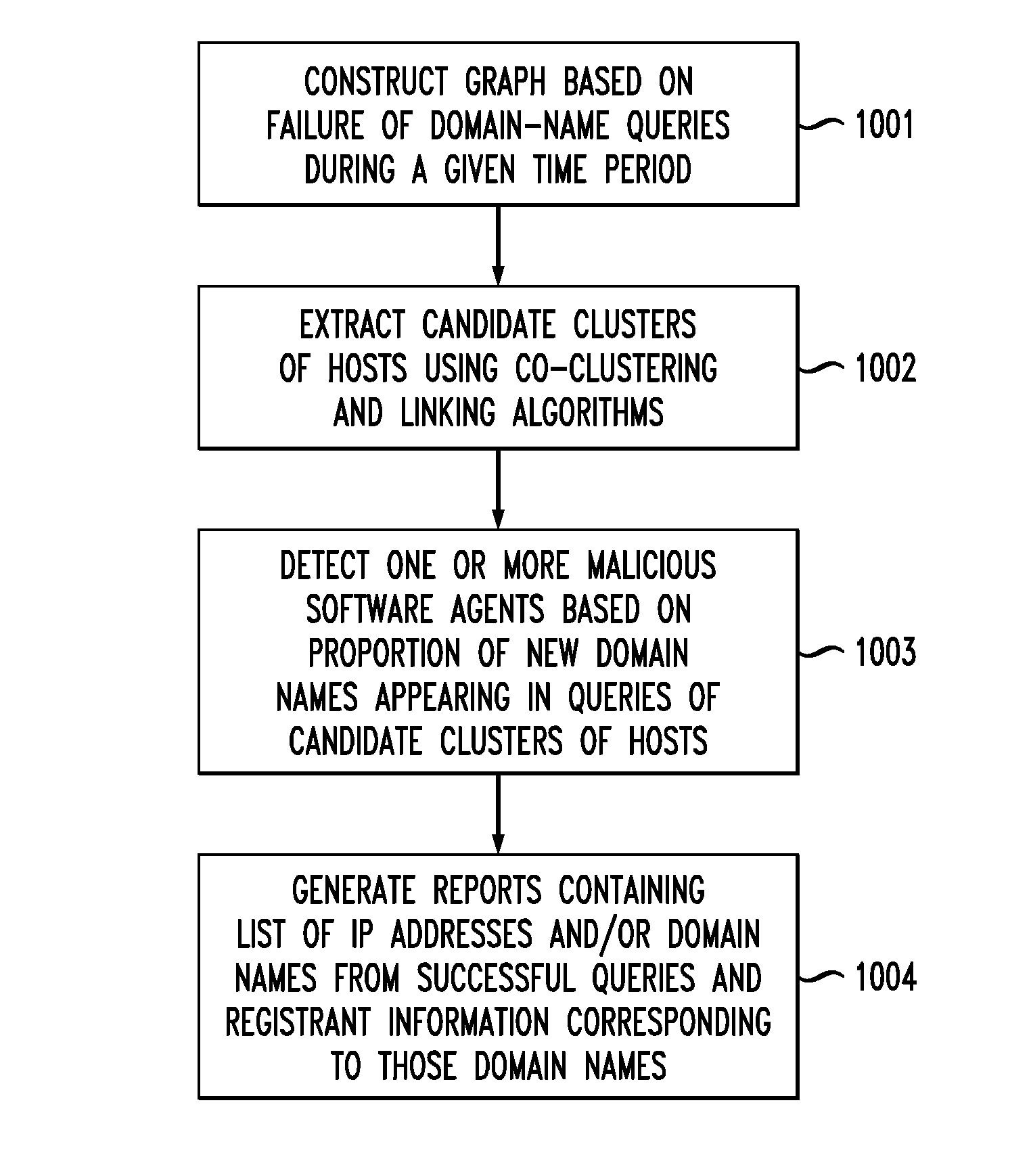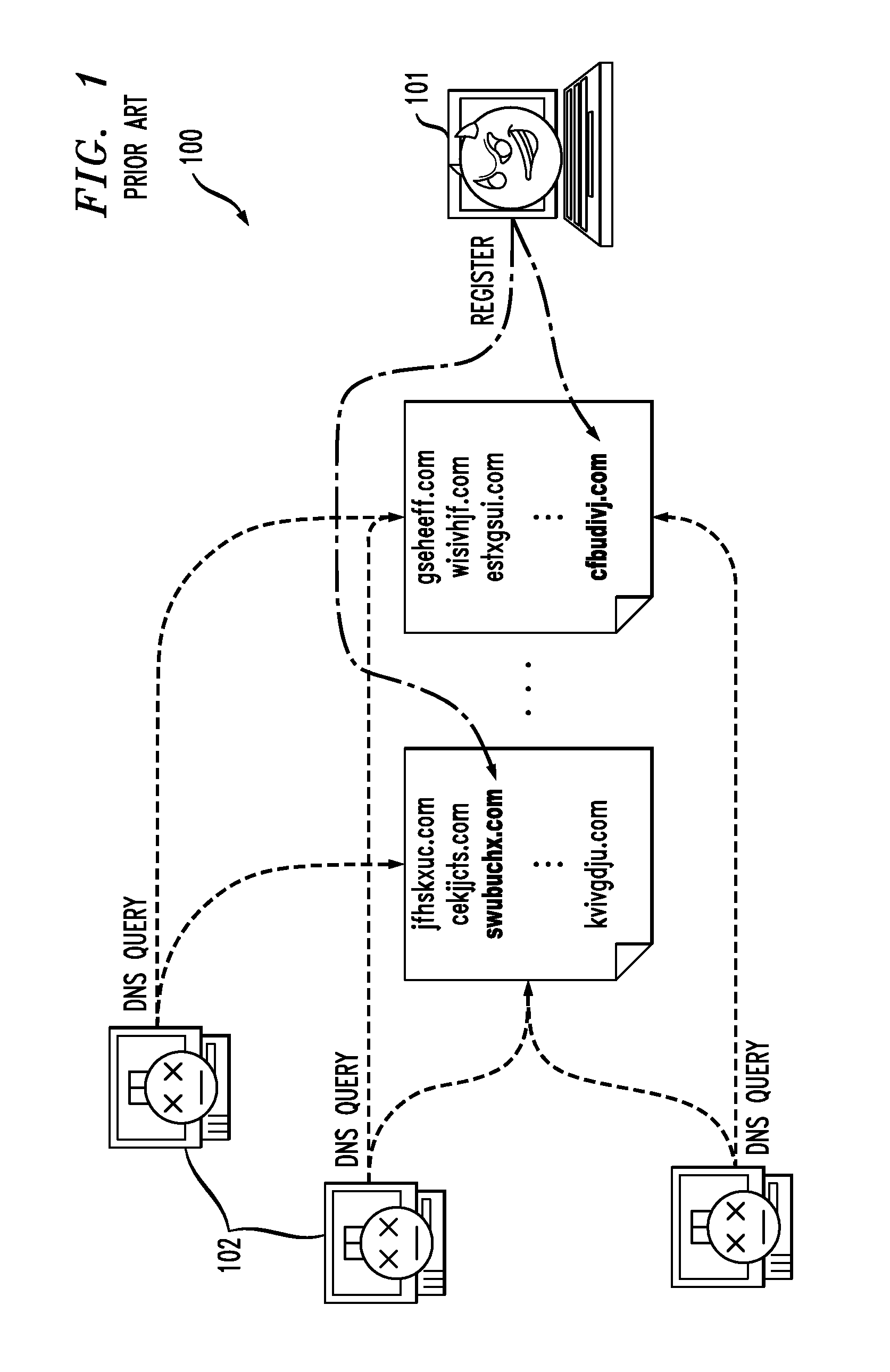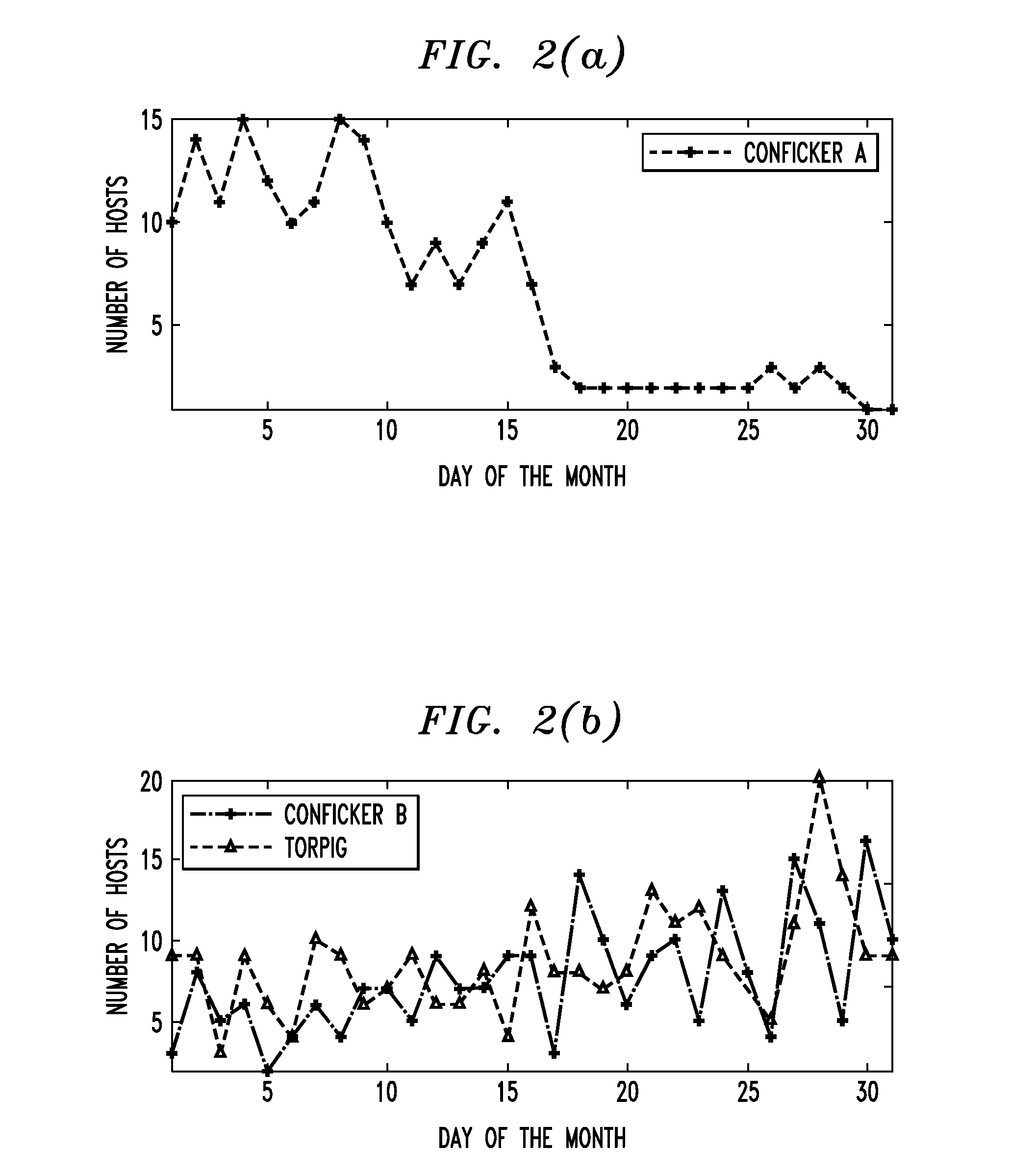System and method for detection of domain-flux botnets and the like
a domain-flux botnet and domain-flux technology, applied in the field of network detection, can solve the problems of single point of failure, difficult to take down or block a specific c&c server, and botnets that are harder to identify, detect and stop
- Summary
- Abstract
- Description
- Claims
- Application Information
AI Technical Summary
Benefits of technology
Problems solved by technology
Method used
Image
Examples
Embodiment Construction
[0034]The inventors hereof studied DNS traffic from a large university network over a three-month period. Based on their observations, the inventors used several domain-generation algorithms (DGAs) obtained through reverse engineering to detect a number of domain-flux bots from the DNS traffic. By studying the behaviors of these bots, it was observed that these bots are characterized by a large number of failed DNS queries. Further, it was observed that bots from the same domain-flux botnet tend to access similar domain names and hence share a number of common failed DNS queries.
[0035]Accordingly, certain embodiments of the invention employ a DNS traffic-failure graph that describes how bots (also referred to herein as “hosts”) in the network query for different domain names within a specific time window. This graph describes the relationship between hosts and the domain names they have queried but failed. By observing community structures in the graph, domain-flux bots and their as...
PUM
 Login to View More
Login to View More Abstract
Description
Claims
Application Information
 Login to View More
Login to View More - R&D
- Intellectual Property
- Life Sciences
- Materials
- Tech Scout
- Unparalleled Data Quality
- Higher Quality Content
- 60% Fewer Hallucinations
Browse by: Latest US Patents, China's latest patents, Technical Efficacy Thesaurus, Application Domain, Technology Topic, Popular Technical Reports.
© 2025 PatSnap. All rights reserved.Legal|Privacy policy|Modern Slavery Act Transparency Statement|Sitemap|About US| Contact US: help@patsnap.com



